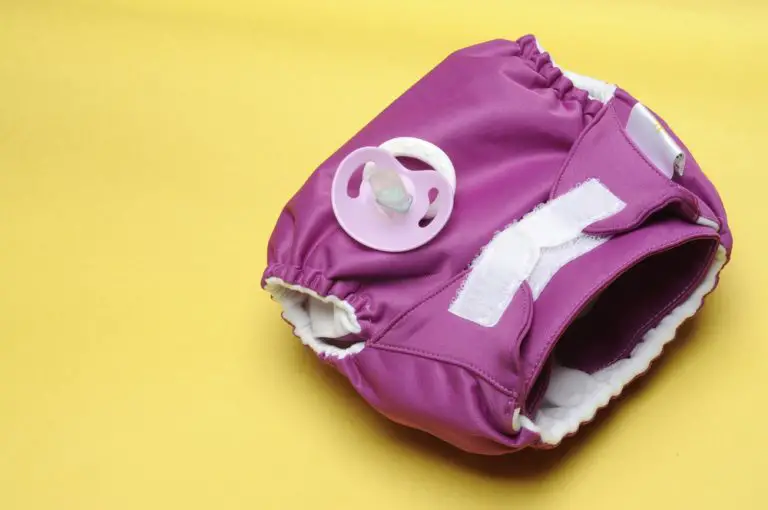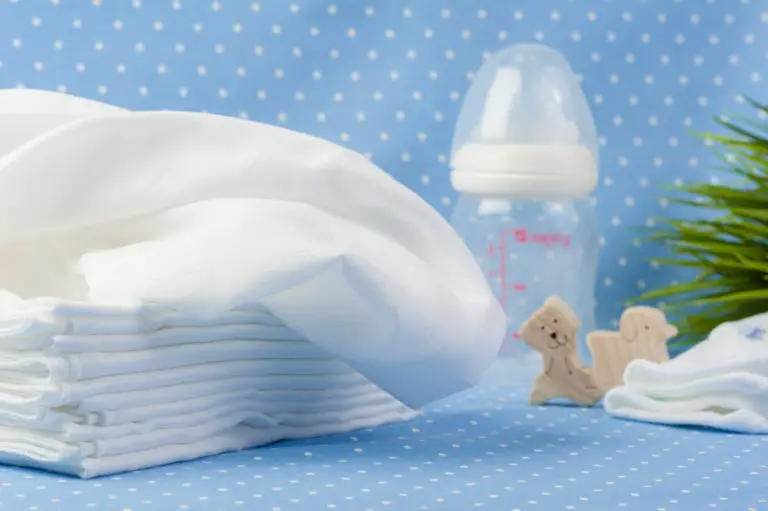How to Sanitize Cloth Diapers? (Everything You Need to Know)
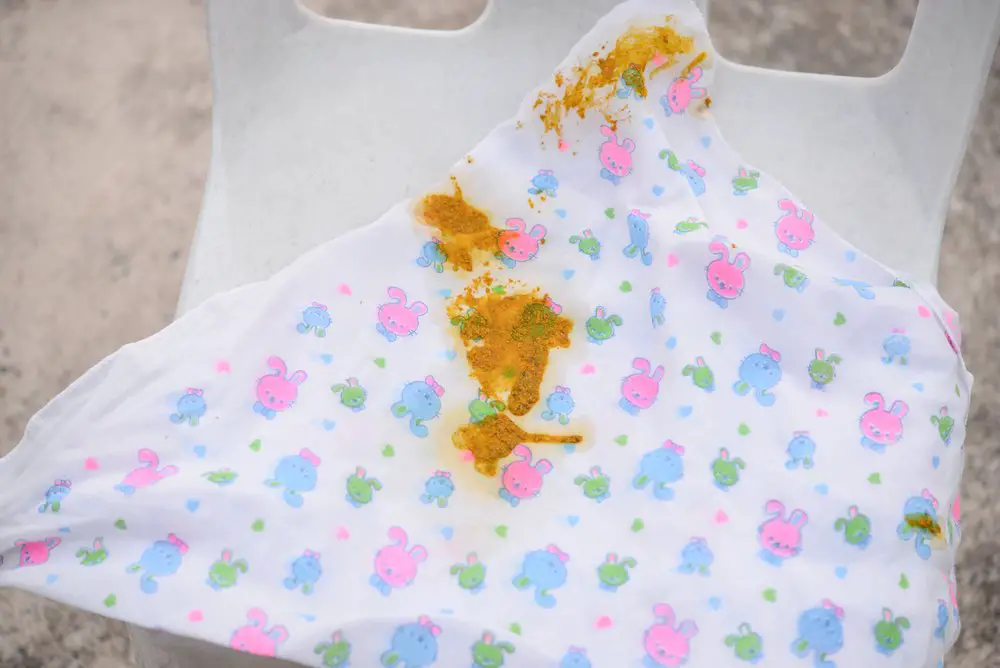
There are many reasons why you need to sanitize your cloth diapers. They may have an odor or stains. Your baby may have been sick recently or be experiencing a recurring diaper rash or yeast infection.
Or, you may be re-selling your diapers, passing them along to a friend or family member, or storing them between babies. In this guide, we explain step by step how to sanitize cloth diapers.
- How to Sanitize Cloth Diapers?
- Chlorine Bleach
- Hydrogen Peroxide and Borax
- Lysol Concentrate Disinfectant
- Pine Oil Disinfectants
- Grapefruit Seed Extract
- Washing Machine Sanitizing Cycle
- Reasons for Sanitizing Cloth Diapers
Disclaimer
This article does not suggest one style of sanitation over another but instead seeks to describe and detail the most popular methods of sanitizing cloth diapers. I will highlight the good and bad of the various ways to sanitize cloth diapers based on popular recommendations and suggestions by the experts.
You should always check with the manufacturer’s recommendations and instructions on cleaning and sanitizing your particular product. If cloth diapers are not correctly sanitized or washed it can cut down on their lifespan and wear down the fabric, elastics, and fasteners.
How to Sanitize Cloth Diapers?
There are several different methods of sanitizing cloth diapers that I will discuss in this article. You can bleach cloth diapers, use hydrogen peroxide and borax, Lysol, grapeseed oil, pine oil, and use your washing machine.
Bleach and hydrogen peroxide are probably the two most popular methods of sanitizing cloth diapers because they are accessible and use standard household products.
Many people say bleaching cloth diapers is the most effective method because bleach is a highly effective germ killer!
Most methods of sanitizing cloth diapers have one thing in common, they all require soaking diapers as part of the process.
Chlorine Bleach
Chlorine bleach is probably the most popular way that people sanitize their diapers. People bleach cloth diapers because it is simple and easy to do.
The downside to bleaching cloth diapers is that bleach is a harsh chemical, and if it is not done properly, it can wear down the fabric of your diapers, meaning you need to replace them more frequently.
What is Chlorine Bleach?
Bleach is a popular household product that is used to disinfect and clean. Household bleach is a combination of water and sodium hypochlorite.
Bleach is a powerful substance and can burn the skin and the eyes if contact is made. Bleach can also remove the color from fabrics, so you need to use caution when using it around clothing and other cloth items you don’t want to be ruined.
Typically when you use bleach, you use a small amount, and you will need to do an extra rinse cycle to ensure all the bleach has been removed.
Pros and Cons of Chlorine Bleach
The biggest benefit of using bleach to sanitize your diapers is that it is a powerful germ killer, so it will definitely disinfect cloth diapers. Another pro is that bleach is something most people keep around the house, so there is no need to purchase special supplies.
People worry that using bleach is bad for the environment, but Clorox actually states that the main ingredient in bleach, sodium hypochlorite, is made from salt and water.
After interacting with the stains in your diapers and clothes, 93%-97% of the product turns back into salt and water.
The biggest con to using bleach is that it is so concentrated you need to be cautious when using it, so you don’t accidentally get it in your eyes. Always wash your hands after using bleach.
When to Use Chlorine Bleach?
You should use bleach about once a month to sanitize your diapers; when using bleach, stick to unscented bleach and one that contains at least 5.25% sodium hypochlorite. Bleach is typically used when you strip your diapers.
Stripping cloth diapers with bleach is a process that removes build-up from detergents and diaper balm, and it can also remove ammonia and yeast from your baby’s diapers. After your diapers have been stripped, they will become more absorbent again.
Using bleach on your diapers every month can also prevent build-up from occurring.
How to Use Chlorine Bleach?
Most cloth diaper companies consider bleach safe to use as long as it is used in a diluted form. Because bleach is so concentrated, it will break down and wear away the fabric of your diapers if it is not diluted.
Natural fibers, which most cloth diapers consist of, will react even quicker to bleach than synthetics. Hence, it is imperative to use caution when using bleach to disinfect or sanitize your diapers.
How much you dilute the bleach will depend on where you are sanitizing your diapers. For a half-full bathtub of water, use ½ cup of bleach. If you are using a top-loading washing machine, use ⅓ cup for a small load, ½ for a medium load, and ¾ for a large load.
It is not recommended to use bleach in a HE washing machine.
- Fill your machine with the desired amount of cold water
- Add the bleach
- Add the diapers
- Soak for 30-45 minutes
- Rinse out bleach with a hot water wash and detergent
- Perform a second rinse or wash if needed
Hydrogen Peroxide and Borax
Hydrogen peroxide and borax combined are a bleach alternative for sanitizing diapers. These two products are also widespread around the home and are very cost-effective.
This method is another very popular choice found among cloth diaper blogs and seems to be highly effective. Hydrogen peroxide and borax seem to be especially useful at redding diapers of yeast.
What is Hydrogen Peroxide?
Hydrogen peroxide is a liquid substance made from water and hydrogen. Store-bought forms are clear, but in its natural state, it is actually a light blue. It is a commonly used disinfectant and can also be used in first-aid, brush teeth, dye hair, and clean bathrooms!
It is a non-toxic substance which makes it a great choice to use in your home. However, even though it is non-toxic, large amounts on your skin could be irritating, and you should keep it away from your eyes and lock it away from children.
Hydrogen peroxide is a popular bleach alternative to keep diapers and clothing white.
Pros and Cons of Hydrogen Peroxide
The biggest pro of using hydrogen peroxide is probably that it is very inexpensive and easy to find at grocery stores and pharmacies.
It is also a well-trusted and well-used substance and is a natural way to clean your diapers. It is a bleaching agent, which makes it a great choice to remove stains from cloth diapers. (2)
Many people prefer hydrogen peroxide if they are looking to have bleach-free diapers. Because it is a bleaching agent, however, you need to exhibit care when using it around fabrics with colors, or you may ruin them.
When to Use Hydrogen Peroxide?
You can use hydrogen peroxide on its own or in combination with Borax. Borax is a white chalky mineral that is commonly used as a household cleaner.
When using hydrogen peroxide on cloth diapers, they should be clean. This is because you are primarily using it to remove stains and build-up, not to wash soiled diapers.
Hydrogen peroxide and borax combined are an excellent choice when laundering cloth diapers to rid them of yeast or fungal infections like mold.
You should never pour hydrogen peroxide directly onto clothing or fabric; like chlorine bleach, it needs to be diluted.
How to Use Hydrogen Peroxide?
You will use more hydrogen peroxide than chlorine bleach, but this shouldn’t be an issue because it is so cost-effective. You will need 1 cup of peroxide for a medium load and 2 cups for a large load.
If you are simply performing your monthly sanitize cycle for cloth diapers, there is no need to soak them.
- Fill your washing machine with warm or hot water
- Add Peroxide and 1 cup of borax if using
- Soak (if preferred) 30 minutes
- Rinse thoroughly
- Repeat steps if necessary
If you are wondering, does borax disinfect? The answer is yes, which is why it is an excellent addition to the hydrogen peroxide sanitation cycle. (3)
Lysol Concentrate Disinfectant
Lysol is a household name, so it fills some people with trust when they see it on a product.
Lysol concentrate disinfectant is known to kill 99.9% of viruses and bacteria and has been proven to kill the COVID-19 virus on surfaces. (4)
However, it may not be the first product that comes to mind when you think of laundry and cloth diapers, but it turns out many people rely on it when it comes to disinfecting cloth diapers.
What is Lysol Concentrate Disinfectant?
Lysol is the brand name of an American cleaning and disinfectant company.
The active ingredient in most Lysol products is benzalkonium chloride. Benzalkonium chloride, in scientific terms, is a chemical compound that is considered highly toxic if ingested.
However, it is a common chemical found in cleaning supplies, cosmetics, shampoos, and skincare products to prevent the growth of bacteria.
Lysol uses this active ingredient because of its strong germ-fighting power. It also deodorizes and can clean grime and grease off surfaces. Lysol concentrate disinfectant is used by diluting it with water and can be used to clean various household items and surfaces.
Pros and Cons od Lysol Concentrate Disinfectant
Lysol is a product readily found in most stores, making it easy to keep on hand. It is also simple to use by following the manufacturer’s instructions to dilute with water.
There is, however, much debate among cloth diaper bloggers on whether or not this is a safe method to use on your cloth diapers.
Lysol does advertise its concentrate disinfectant as a laundry detergent or as a cloth diaper cleaner. However, there is little to no information on their website about using their product effectively for cloth items.
However, they have an entire line of laundry sanitizers which could be a way to disinfect without bleach as each product is advertised as containing 0% bleach. (5)
When to Use Lysol Concentrate Disinfectant?
Based on the research performed, I honestly would not recommend using Lysol’s concentrated disinfectant on cloth diapers and would opt instead for one of their laundry sanitizers.
However, if you are a fan of Lysol products, then stick to using the concentrated disinfectant to clean your baby’s toys, household surfaces, and the floors they play on.
Lysol’s laundry sanitizers are gentle on fabrics, and they offer a free and clear option which is an excellent choice for baby clothes and cloth diapers. In addition, you can use their laundry sanitizers for regular loads of wash and deep clean cloth diapers.
How to Use Lysol Concentrate Disinfectant?
As mentioned in the previous paragraph, I would refrain from using Lysol concentrate disinfectant on clothing or cloth diapers and instead use one of their laundry sanitizer products.
Lysol’s laundry sanitizers work just like regular laundry detergent and are safe to use each time you wash your baby’s diapers because they are bleach-free.
You can also add a capful to your machine to soak your cloth diapers pre-wash; this method will kill 99.9% of viruses and bacteria. An added bonus is that Lysol laundry sanitizers are safe to use in HE machines and can also be used with cold water.
Pine Oil Disinfectants
You may be asking yourself what a pine oil disinfectant is? Pine oil is the active ingredient in the popular household cleaner Pine Sol, but it is also highly effective at cleaning fabrics, both lights and darks, which might make it the perfect choice to disinfect without bleach!
What is a Pine Oil Disinfectant?
Pine oil is a natural essential oil that can come from any variety of the pine family and is obtained by distilling the stumps, needles, twigs, and cones of pine trees and plants.
In 1995 synthetic pine oil was created and makes up 90% of the pine oil sold today.
Pine oil is commonly used in aromatherapy and works as a disinfectant and antiseptic. (6) Pine oil is most commonly found in wood and furniture cleaners and household disinfectants such as Pine-Sol.
Products with pine oil have a very refreshing and uplifting scent that many people enjoy.
Pros and Cons of Pine Oil Disinfectants
Since pine oil is derived from a plant, some people, especially babies, may have an allergic reaction to it, such as hives or a rash.
On the other hand, the scent is very soothing to some people, and pine oil is even used as an anti-inflammatory and to help with congestion in alternative medicine.
A massive pro for pine oil disinfectants is that it is safe to use with both light and dark fabrics; therefore, it erases the concerns that you might ruin something like when you use bleach and hydrogen peroxide.
Because of its pleasant smell, it is also an excellent choice for erasing odors.
When to Use Pine Oil Disinfectants?
Pine oil disinfectants are great at removing stubborn stains and to remove odors.
For example, to remove specific stains from your cloth diapers, you can use pine oil disinfectants as a spot cleaner. To use pine oil disinfectants as a spot cleaner, gently rub the fabric together to agitate it.
You may also want to let the diapers sit with stain remover on it before moving on to the soak or wash cycle.
Some people say you shouldn’t use pine oil cleaners in your washing machine unless you are in a pinch, so you may want to stick to using this style of disinfecting to your bathtub or a large bucket.
How to Use Pine Oil Disinfectants?
Since you will likely be using pine oil disinfectants to pretreat stains, start by pouring a small amount of the product directly onto the stain. You could also pour some into a cup and use a toothbrush to work at any stains.
- Pretreat any stains
- Allow the diapers to sit for 10-20 minutes
- Place diapers into the washing machine
- Add laundry detergent
- Wash on a regular cycle
If you are using a pine oil disinfectant in your machine as a cleaning agent, add one cup after filling the machine with water. It is not recommended for use on specialty fabrics, so always check with your cloth diaper manufacturer first.
Grapefruit Seed Extract
Grapefruit Seed Extract is an antimicrobial that is said to destroy or suppress the growth of microorganisms. (7) It is known to be effective against a wide range of bacteria.
It is probably one of the least known ways to sanitize and disinfect cloth diapers but is said to be very effective against mold, cloth diaper yeast, and stains.
What is Grapefruit Seed Extract?
Grapefruit seed extract is an essential oil that is made from the seeds and pulp of grapefruit. Grapefruit seed extract laundry powder and detergent exist because of their powerful bacteria-fighting agents and their wonderful smell.
You can also purchase it as an essential oil and vitamin form since it is said to help fight bacterial and fungal infections such as UTIs and yeast infections.
Some products are made specifically for human consumption, and others are not.
If you are solely using it for laundry purposes, that shouldn’t matter but be sure to purchase from a reputable source and look for 100% grapefruit seed extract instead of blended oil.
Pros and Cons of Grapefruit Seed Extract
A huge pro in my book is the wonderful smell of grapefruit seed extract. It is citrusy and bright and makes everything smell fresh and clean. It is also completely natural and not likely to cause an allergic reaction.
One con is that it is only a disinfectant, so it will not remove stubborn stains. However, it is a great product to use in combination with something like OxiClean, which can remove stubborn stains.
And if you’re wondering, does OxiClean disinfect? Yes, it does, but it doesn’t have the incredible smell that grapefruit seed extract does!
When to Use Grapefruit Seed Extract?
Grapefruit seed extract is an excellent choice when you need to rid your cloth diapers of mold. Grapefruit seed extract is a natural disinfectant, but it does not clean up stains.
The human consumable version is sometimes used after your little one has been sick since it naturally kills many viruses and bacteria without harsh chemicals.
You need to have a little bit of time on your hands to use grapefruit seed extract because it does need to sit on the diapers overnight for peak effectiveness.
How to Use Grapefruit Seed Extract?
Grapefruit seed extract is typically used in the concentrated form of essential oil, but it can also be found in laundry detergent or powder products.
To use grapefruit seed extract to rid your cloth diapers of yeast or mold, fill a spray bottle with water and add ten drops of the extract to the bottle.
Shake the bottle to blend, then spray the diapers and let them sit overnight. You will need to follow up with a wash using a method to remove the stains since grapefruit seed oil is only known to disinfect.
Washing Machine Sanitizing Cycle
Many modern washing machines now come equipped with a sanitizing cycle. This cycle is designed to rid your machine of any bacteria or microorganisms that dirty clothing leaves behind.
Because a washing machine is a warm, damp place, the kind of paces bacteria and mold love to grow, using the sanitation cycle can rid your machine of these unwanted guests.
What is the Sanitizing Cycle?
The sanitizing cycle is a unique cycle you can set on your washing machine to add an extra layer of protection and germ-busting power to your wash cycle.
It is specifically designed to rid your clothing of any stubborn germs and bacteria that a regular cycle may not get rid of.
It also prevents future loads of laundry from being contaminated by riding nearly all the germs placed in your machine each time.
It usually includes one extra rinse with extremely hot water or, in the case of your clothes dryer, one final cycle of extra hot air.
Pros and Cons of the Sanitizing Cycle
The sanitizing cycle makes things very easy for the user because there is nothing extra you need to do to make sure your diapers and clothing come out of the wash sanitized and germ-free.
The downsides are that it uses extra water and electricity, so it can become costly to do all the time and is probably not the most environmentally friendly choice.
Because of the extra cycle, it is also time-consuming. It also does not rid your diapers of stains, so you will still need to use a stain removal method in conjunction with the sanitizing cycle.
When to Use the Sanitizing Cycle?
It is a great idea to use the sanitizing cycle on your baby’s cloth diapers, clothing, and bedding if your baby has been ill.
It is an easy method of sanitizing all the cloth materials your baby has come in contact with to make sure the germs don’t stick around.
The sanitizing cycle is also useful when you are not trying to rid your diapers of stains but merely want to do a regular sanitation cycle every month or so.
You should also consider using the sanitation cycle on clothing and bedding that has come home from childcare or while you were away on vacation, as this can prevent foreign germs from entering your home.
How to Use the Sanitizing Cycle?
There are no special instructions for using the sanitizing cycle; typically, you just follow your washing machine or clothes dryer directions. It is possible your washing machine manual may have some tips, but it should be fairly straightforward.
If your machine does not have a specified cycle, you can do your own DIY cycle by simply adding an extra rinse on the hottest water temperature you have.
However, you do want to be careful when using this cycle repeatedly, as washing your diapers too often in extremely hot water may damage the fabric.
Reasons for Sanitizing Cloth Diapers
There are many reasons why you may need to sanitize your cloth diapers.
Perhaps your baby has been sick or suffered from a yeast infection. Perhaps they had a bad bout of diaper rash, which required you to use diaper creams and other medicated ointments.
In addition, you may wish to sanitize pre-owned cloth diapers before you use them, or you may be cleaning used cloth diapers before you pass them onto a friend or family member.
Used Cloth Diapers
Purchasing or passing on used cloth diapers is one of the number one reasons you will want to sanitize your cloth diapers. However, washing used cloth diapers alone is not enough to ensure they are germ-free before your baby wears them.
While you would like to hope the person who owned them before you did their part inadequately cleaning them, but there is no reason to take the risk. Plus, it provides you the opportunity to learn how to do it before you may need to sanitize due to an illness or other issue.
Yeast in Cloth Diapers
Yeast diaper infections are another reason you will need to sanitize your baby’s cloth diapers.
Yeast in cloth diapers is the result of your baby having a bacterial infection so it is something that must be appropriately handled before your baby can use the diapers again.
Yeast infections are caused by a completely natural bacteria that occurs in our digestive system, but if the bacteria overgrows, it becomes an infection.
Therefore, you should continue to sanitize your cloth diapers for one whole week after your baby’s symptoms have disappeared to ensure you have killed all the bacteria.
Stinky Diapers
Cloth diapers can become stinky because of mineral despots and the build-up of ammonia.
Usually, good water and bleach to soak your cloth diapers are enough to get rid of the stink and the build-up, but any of the sanitizing methods mentioned in this article can do the job.
To avoid build-up, be sure to thoroughly rinse your baby’s diapers each time you wash them, as leftover detergent and diaper cream deposits are the leading culprits in causing build-up.
If you have washed your diapers and they still smell of urine or poop, rinse them again. If the smell still lingers, it may be time to strip your diapers.
FAQ
Do you need to disinfect cloth diapers?
It is possible your diapers may never need to be disinfected but also unlikely. All babies become sick at some point, and build-up will eventually occur if diapers are used for lengthy periods of time.
Will bleach ruin my cloth diapers?
No, bleach will not ruin your cloth diapers if used properly and when it is diluted. Overuse of bleach will wear down the fabric of the diapers over time.
Can you use laundry sanitizer on cloth diapers?
Yes, you can use a laundry sanitizer. Look for a free and clear option with no scents or added deodorizers as they will be more gentle on cloth diapers.
How do you disinfect cloth diapers with bleach?
Fill your washing machine with cold water and add ½ cup of bleach to the water. Then allow your diapers to soak for 30 minutes. Finally, wash the diapers on a regular cycle.
How do you disinfect cloth diapers without bleach?
You can use laundry sanitizers, pine oil, grapefruit seed extract, OxiClean, or run your washer on its sanitizing cycle.
Can I use vinegar on cloth diapers?
Yes. Vinegar naturally balances the pH balance and deodorizes and kills odor-causing bacteria. It can also help prevent stains from setting.
Is Lysol laundry sanitizer safe for cloth diapers?
Yes. Lysol laundry sanitizer is safe for cloth diapers but you should use their free and clear option as it is the most gentle and contains no deodorizers or scents.
Does OxiClean sanitize?
No, regular Oxiclean is not meant to be a sanitizer. But, OxiClean does have a separate laundry sanitizer.
Can I use hydrogen peroxide on cloth diapers?
Yes, but it is bleach so you need to be careful you don’t overuse and that you dilute it before placing your diapers in it. You need 1 cup of hydrogen peroxide for a full load of diapers.
How to clean cloth diapers?
Rinse your diapers first in cold water. Then run them through a regular wash cycle with cloth diaper-safe laundry detergent. It is recommended you air dry your cloth diapers.
How to clean used cloth diapers?
Follow the steps of your chosen sanitation method and then follow up with an additional wash cycle. Air dry your cloth diapers in the sun as a final sanitizing boost.
References
- Clorox. 2022. Can You Bleach Baby Clothes? Link
- Bul Peroxide. 2022. How to Use Hydrogen Peroxide for Cleaning and Disinfecting. Link
- Anne Marie Helmenstine, Ph.D, ThoughtCo. 2020. What Is Borax and How Is It Used? Link
- Lysol. 2022. Link
- Lysol. 2022. Lysol Laundry Sanitizer Kills 99.9% of Bacteria Detergents Leave Behind. Link
- Debra Rose Wilson, Ph.D., MSN, R.N., IBCLC, AHN-BC, CHT, Kristeen Cherney, Healthline. 2019. What You Need to Know About Pine Essential Oil. Link
- Meredith Bull, ND, Cathy Wong, VeryWellHealth. 2021. What Is Grapefruit Seed Extract? Link

Laurel Davidson
Laurel brings her passion for parenting and years of problem-solving experiences to ParentingMode. She is the editor of ParentingMode, ensuring that the content is relevant and valuable to the readers. Laurel received her master’s degree in public administration with a certificate in economic development. She is a stay-at-home mom, raising two adorable kiddos, Aurora and Thomas. Laurel enjoys sharing her experience as a parent, traveling, and good food.

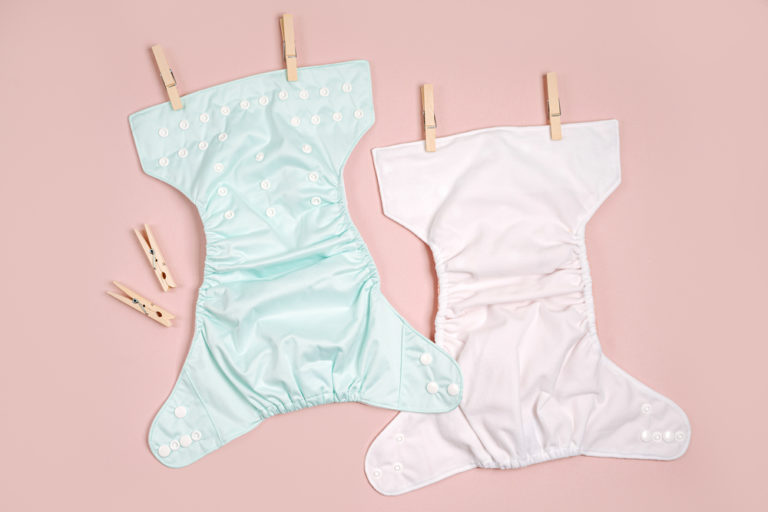
![12 Best Diapers in 2024 [Chemical-Free & Super-Absorbent]](https://parentingmode.com/wp-content/uploads/2022/06/Depositphotos_152234060_S-768x512.jpg)
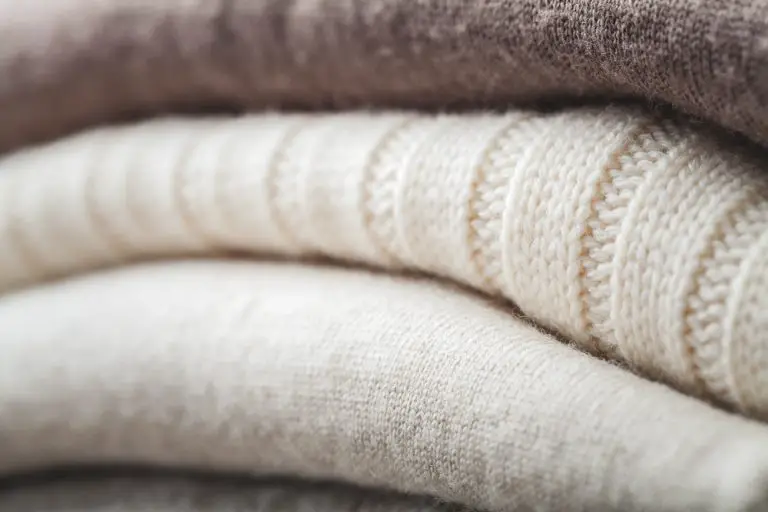
![10 Best Overnight Diapers for Toddlers [That Actually Work]](https://parentingmode.com/wp-content/uploads/2022/06/Depositphotos_308896146_S-768x512.jpg)
